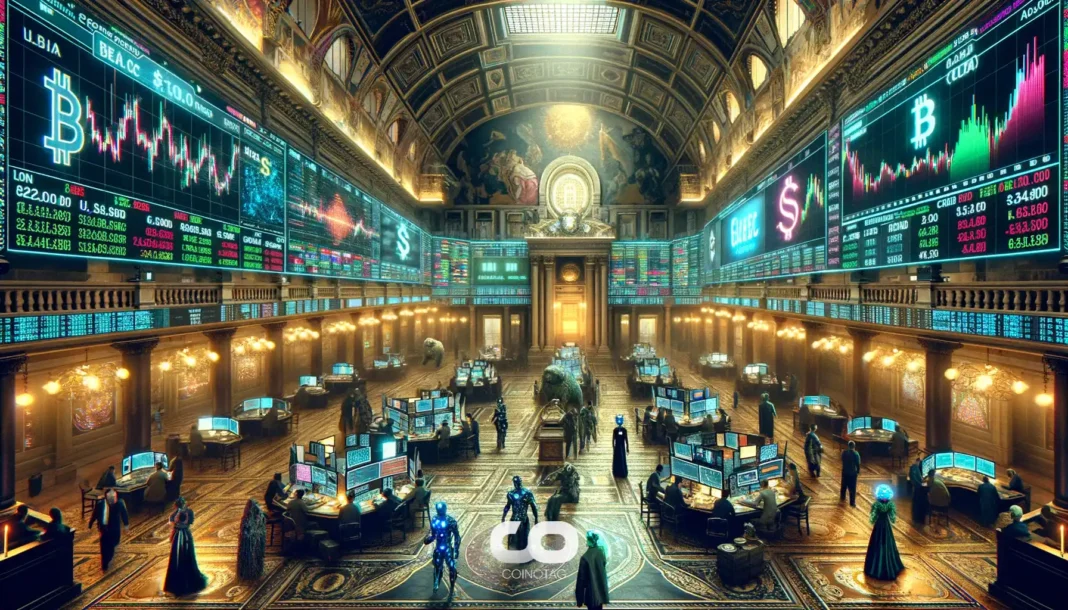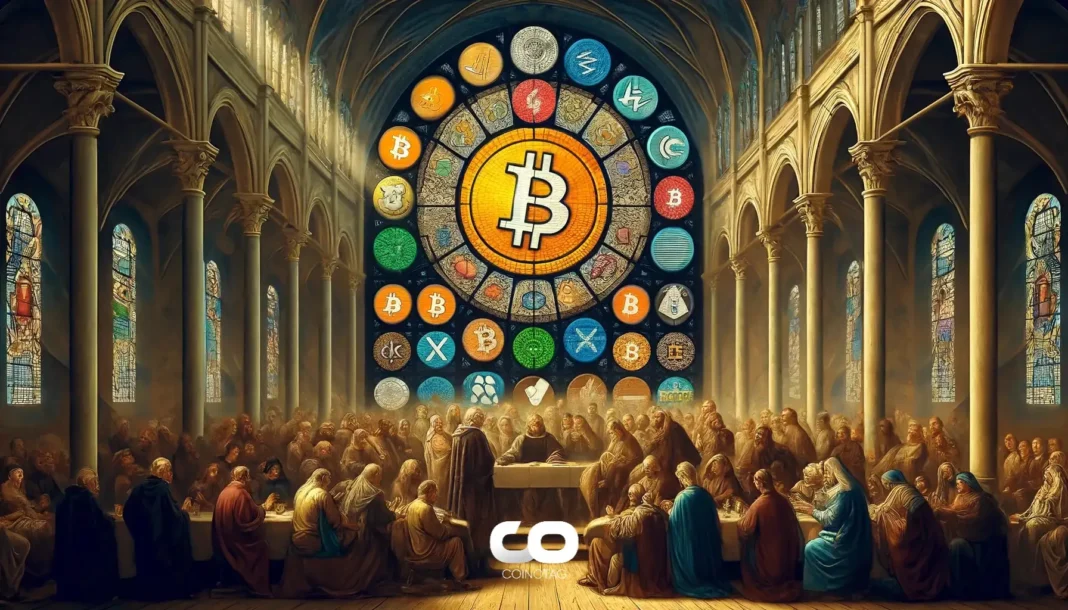| COINOTAG recommends • Exchange signup |
| 💹 Trade with pro tools |
| Fast execution, robust charts, clean risk controls. |
| 👉 Open account → |
| COINOTAG recommends • Exchange signup |
| 🚀 Smooth orders, clear control |
| Advanced order types and market depth in one view. |
| 👉 Create account → |
| COINOTAG recommends • Exchange signup |
| 📈 Clarity in volatile markets |
| Plan entries & exits, manage positions with discipline. |
| 👉 Sign up → |
| COINOTAG recommends • Exchange signup |
| ⚡ Speed, depth, reliability |
| Execute confidently when timing matters. |
| 👉 Open account → |
| COINOTAG recommends • Exchange signup |
| 🧭 A focused workflow for traders |
| Alerts, watchlists, and a repeatable process. |
| 👉 Get started → |
| COINOTAG recommends • Exchange signup |
| ✅ Data‑driven decisions |
| Focus on process—not noise. |
| 👉 Sign up → |
-
Quantoz Payments, in partnership with Kraken, Tether, and Fabric Ventures, is set to revolutionize the European stablecoin market with the launch of MiCA-compliant EURQ and USDQ.
-
This initiative is aimed at enhancing the safety and efficiency of digital payments in the EU, with a strong regulatory backing from the Dutch Central Bank.
-
According to Anil Hansjee from Fabric Ventures, “Europeans speak loudly about MiCA making stablecoin issuance seamless in Europe,” signifying broad support for regulatory advancements.
Quantoz Payments launches MiCA-compliant stablecoins EURQ and USDQ in partnership with Kraken, Tether, and Fabric Ventures, ensuring a secure digital payment ecosystem in the EU.
MiCA Compliance: A Step Toward Market Trust
The introduction of EURQ and USDQ represents a significant breakthrough in the regulated digital finance landscape within the EU. These stablecoins, aligned with the Markets in Crypto-Assets Regulation (MiCA), aim to build consumer and investor trust in stablecoin issuers. This regulatory framework is designed to enhance transparency and reduce risks associated with digital transactions.
Both tokens will be backed 1:1 by fiat currencies, ensuring their value stability, with an additional requirement for Quantoz to maintain a 2% reserve. Such measures address integral concerns about the volatility often associated with cryptocurrencies, fostering a more secure environment for users.
Additionally, the tokens are registered as e-money tokens (EMTs) by the Dutch Central Bank (DNB), further solidifying their legitimacy in the financial market and providing users with a regulated alternative for daily transactions.
| COINOTAG recommends • Professional traders group |
| 💎 Join a professional trading community |
| Work with senior traders, research‑backed setups, and risk‑first frameworks. |
| 👉 Join the group → |
| COINOTAG recommends • Professional traders group |
| 📊 Transparent performance, real process |
| Spot strategies with documented months of triple‑digit runs during strong trends; futures plans use defined R:R and sizing. |
| 👉 Get access → |
| COINOTAG recommends • Professional traders group |
| 🧭 Research → Plan → Execute |
| Daily levels, watchlists, and post‑trade reviews to build consistency. |
| 👉 Join now → |
| COINOTAG recommends • Professional traders group |
| 🛡️ Risk comes first |
| Sizing methods, invalidation rules, and R‑multiples baked into every plan. |
| 👉 Start today → |
| COINOTAG recommends • Professional traders group |
| 🧠 Learn the “why” behind each trade |
| Live breakdowns, playbooks, and framework‑first education. |
| 👉 Join the group → |
| COINOTAG recommends • Professional traders group |
| 🚀 Insider • APEX • INNER CIRCLE |
| Choose the depth you need—tools, coaching, and member rooms. |
| 👉 Explore tiers → |
The Role of Regulatory Frameworks in Cryptocurrency Acceptance
The positive reception of these stablecoins underscores a growing recognition of the need for regulatory frameworks in cryptocurrency markets. By adhering to MiCA’s guidelines, stablecoins like EURQ and USDQ are not only enhancing their credibility but also paving the way for broader adoption across the European Economic Area (EEA).
This move indicates a shift toward more secure, regulated digital financial instruments, which could attract traditional investors seeking safer options in the volatile cryptocurrency landscape. Such developments are crucial as they align with the continuing need for innovation within the financial sector while maintaining robust regulatory oversight.
| COINOTAG recommends • Exchange signup |
| 📈 Clear interface, precise orders |
| Sharp entries & exits with actionable alerts. |
| 👉 Create free account → |
| COINOTAG recommends • Exchange signup |
| 🧠 Smarter tools. Better decisions. |
| Depth analytics and risk features in one view. |
| 👉 Sign up → |
| COINOTAG recommends • Exchange signup |
| 🎯 Take control of entries & exits |
| Set alerts, define stops, execute consistently. |
| 👉 Open account → |
| COINOTAG recommends • Exchange signup |
| 🛠️ From idea to execution |
| Turn setups into plans with practical order types. |
| 👉 Join now → |
| COINOTAG recommends • Exchange signup |
| 📋 Trade your plan |
| Watchlists and routing that support focus. |
| 👉 Get started → |
| COINOTAG recommends • Exchange signup |
| 📊 Precision without the noise |
| Data‑first workflows for active traders. |
| 👉 Sign up → |
Tether CEO Raises Concerns Over MiCA Regulations
Despite the excitement surrounding the launch of EURQ and USDQ, Paolo Ardoino, CEO of Tether, has expressed cautious concerns regarding the implications of the MiCA framework. He raised alarms about potential “systemic risks” that could emerge for the banking sector under the new regulations.
One of Ardoino’s primary concerns is the stipulation that stablecoin issuers must maintain a minimum of 60% of their reserves in European banks. This requirement, he argues, could lead to vulnerabilities in the financial system, particularly if banks begin to encounter financial instability.
| COINOTAG recommends • Traders club |
| ⚡ Futures with discipline |
| Defined R:R, pre‑set invalidation, execution checklists. |
| 👉 Join the club → |
| COINOTAG recommends • Traders club |
| 🎯 Spot strategies that compound |
| Momentum & accumulation frameworks managed with clear risk. |
| 👉 Get access → |
| COINOTAG recommends • Traders club |
| 🏛️ APEX tier for serious traders |
| Deep dives, analyst Q&A, and accountability sprints. |
| 👉 Explore APEX → |
| COINOTAG recommends • Traders club |
| 📈 Real‑time market structure |
| Key levels, liquidity zones, and actionable context. |
| 👉 Join now → |
| COINOTAG recommends • Traders club |
| 🔔 Smart alerts, not noise |
| Context‑rich notifications tied to plans and risk—never hype. |
| 👉 Get access → |
| COINOTAG recommends • Traders club |
| 🤝 Peer review & coaching |
| Hands‑on feedback that sharpens execution and risk control. |
| 👉 Join the club → |
Ardoino cautioned that if banks, which lend out a majority (up to 90%) of their reserves, face liquidity issues, it could endanger the stability of stablecoin reserves and subsequently affect their users.
Norway’s Perspective on MiCA and Digital Currency
In a related development, Norway’s central bank, Norges Bank, has expressed support for the MiCA framework as of November 9, while also evaluating its implications for the potential implementation of a central bank digital currency (CBDC).
Kjetil Watne, project director at Norges Bank, highlighted their cautious optimism, stating that while the bank appreciates the MiCA initiative, they are still contemplating whether further regulations would be necessary to guarantee financial stability within their own framework.
As part of the European Economic Area, Norway aligns closely with EU regulations and continues to assess the viability of a CBDC, particularly in shaping a “CBDC-based cross-border payment system” that could streamline transactions across borders.
| COINOTAG recommends • Exchange signup |
| 📈 Clear control for futures |
| Sizing, stops, and scenario planning tools. |
| 👉 Open futures account → |
| COINOTAG recommends • Exchange signup |
| 🧩 Structure your futures trades |
| Define entries & exits with advanced orders. |
| 👉 Sign up → |
| COINOTAG recommends • Exchange signup |
| 🛡️ Control volatility |
| Automate alerts and manage positions with discipline. |
| 👉 Get started → |
| COINOTAG recommends • Exchange signup |
| ⚙️ Execution you can rely on |
| Fast routing and meaningful depth insights. |
| 👉 Create account → |
| COINOTAG recommends • Exchange signup |
| 📒 Plan. Execute. Review. |
| Frameworks for consistent decision‑making. |
| 👉 Join now → |
| COINOTAG recommends • Exchange signup |
| 🧩 Choose clarity over complexity |
| Actionable, pro‑grade tools—no fluff. |
| 👉 Open account → |
Conclusion
The launch of EURQ and USDQ signifies a critical moment for digital payments in the EU, showcasing a blend of innovation and regulation. With backing from significant players like Kraken and Tether, along with compliance with MiCA, these stablecoins are poised to enhance financial transaction security and trustworthiness. As the landscape evolves, ongoing dialogue regarding regulations will be essential to address concerns and promote a stable financial ecosystem across Europe.
| COINOTAG recommends • Members‑only research |
| 📌 Curated setups, clearly explained |
| Entry, invalidation, targets, and R:R defined before execution. |
| 👉 Get access → |
| COINOTAG recommends • Members‑only research |
| 🧠 Data‑led decision making |
| Technical + flow + context synthesized into actionable plans. |
| 👉 Join now → |
| COINOTAG recommends • Members‑only research |
| 🧱 Consistency over hype |
| Repeatable rules, realistic expectations, and a calmer mindset. |
| 👉 Get access → |
| COINOTAG recommends • Members‑only research |
| 🕒 Patience is an edge |
| Wait for confirmation and manage risk with checklists. |
| 👉 Join now → |
| COINOTAG recommends • Members‑only research |
| 💼 Professional mentorship |
| Guidance from seasoned traders and structured feedback loops. |
| 👉 Get access → |
| COINOTAG recommends • Members‑only research |
| 🧮 Track • Review • Improve |
| Documented PnL tracking and post‑mortems to accelerate learning. |
| 👉 Join now → |






